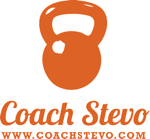We’ve all been there. The sun has just come up, and your head feels like it’s twice the size as the one you went to bed with. You’re hazy on specifics, but there are still a few congealed pieces of pizza on the counter. And now you’re trying to decide if logging all that pizza, wine, and ice cream into MyFitnessPal will just make you feel worse. Yes, you’ve stumbled, but with a simple mental shift you can get back on track in the time it takes to find the Advil and read this post.
“Becoming is better than being,” Carol Dweck writes inMindset.A psychology professor at Stanford University, Dweckfinds the key difference between successful people and those who aren’t is a “growth mindset,” a way of looking at life that highlights effort and learning over innate ability and given circumstances. I have seen this mindset first hand working with elite-level, internationally competitive athletes. These athletes sacrificed decades to prepare for a single moment of competition, and if anything went wrong on that path to the top, they would do something quite amazing: they’d shrug it off. These athletes would find something positive to say about the experience, and move on as naturally as you and I are breathing. In the world of sport psychology, this powerful skill is calledReframing. And, like all skills, reframing can be learned, practiced, and improved with time. Here’s how:
1. Forgive yourselfIt wasn’t going to be easy and it wasn’t going to be perfect. You’re still on the path, you’re still moving forward, the road just isn’t as straight as it looked from where you were. For many of my clients, this is the most difficult step, but there’s a trick that might make it easier: Take a deep breath and actually say the words, “I’m OK,” out loud.
2. Learn from the experienceOne of the athletes with whom I worked had a sticker on her training journal that said simply, “Win or Learn.” This is an opportunity to reorient. Why is the path different than you thought? Are your priorities in order? Are you pushing yourself too hard? Or not enough? Are you bored? Are you missing something? These are all fixable problems if you take the time to reflect.
3. Change your perspectiveThere is a saying in Zen Buddhism: “The obstacles are the path.” Context is everything, and if you think of this moment as an opportunity to learn more about yourself and what you’re doing, then you’ll actually be better off for the experience.
4. Don’t worry about the next mile, worry about the next stepPut your time and energy into what you need to do today to get back on track. What can you do in the next day, the next hour, or the next 60 seconds that will refocus you on your goal? Even if it’s simply tossing the leftovers in the trash or making a cup of coffee, you’ll be headed in the right direction.
5. Have a ritualMy best athletes had some set pattern that told them it was time to move on. They took a deep breath. They took off their shoes. They packed up their gear. Even the simple act of saying out loud, “Whelp, glad that’s over!” can create the space necessary to get back at it.
Reframing can seem like huge task when you’re down, which is why I didn’t try to teach the habit to athletes at the State Championship. We practiced these steps in training sessions instead, when the stakes were low and the emotions were less charged. You can practice them in daily life too, by reframing a typo in an email, burnt toast, or a wrong turn. Practice makes perfect when it comes to getting into the habit of finding the bright side—especially when it’s the bright side that has you reaching for the Advil.
Have you “reframed” a misstep or mistake lately? What helped you see the bright side of the situation?


